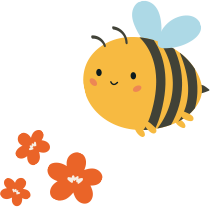Meet Tina Ličková – a digital product expert specializing in research and product strategy. She helps clients to discover new business opportunities as well as optimize existing products.
She is also a host of our UXR Geeks podcast 🎙️ and an aspiring product manager.
In this interview with UXtweak, Tina covers:
🔥 The mindset shift from UX to product management and the impact of AI
🙋♀️ Her personal journey in research democratization
💡 Tips for researchers to have a stronger voice in product strategy
📢 How to guide teams when there’s no clear direction
🤖 Tina’s perspective on the future of UX with AI and its role in shaping products
… and so much more! Let’s dive right in!
UX and Product

Is there something you believed about UX early in your career that you’ve since changed your mind about?
How much time do you have? 🙂
There is so much I believed to be true, but I was wrong about or I had to reconsider, that it would make a whole list. However, one of the strongest mental changes I had to go through was my perspective on democratizing research.
I wouldn’t say, but I had clear and maybe even rigid limits on how it should be done or what should be “allowed”.
After years in UX research and strategy, you’re moving toward product management — what sparked that shift?
There are two aspects:
- It’s a very natural move, as throughout the last 15 years, I have experienced various roles in UX and research, and I sense that all this has to come together somehow. I am also educating myself right now, pretty heavily, in the technology basics. So it simply makes sense to merge this into a role, that connects all my knowledge and experiences.
- I see the product field changing through AI drastically, not just the research part by the way — it’s going to affect all roles, incl. product management – and I want to be able to “soak up” this change in a more generalists’ role.
How has your research background influenced how you approach product thinking?
It’s not only the “empathize with the users” part, but also the understanding of business goals and showing empathy and compassion to your colleagues as well. Managing products means for me the ability to balance multiple entry points delicately and confront myself with a constant feedback loop from all possible sources.
Research also, sometimes even brutally, shows you where your focus should be, which then makes the prioritization a bit easier?
You help teams spot new opportunities. What’s your process when starting with a team or client that has no clear direction?
If they don’t have the clarity, then I start by doing everything, that can get us the clarity.
I sometimes wonder, and this may seem harsh or impolite to some, but how little some of my clients know about what goals they want to achieve.
It doesn’t also have to be something super-sophisticated: Sometimes a short conversation is enough. Sometimes, a question-storming workshop where we gather all the questions they have (without any censorship or ambition for a question well-asked).
It helps me to understand what they are after, what they are trying to learn, and it also helps me to define and understand the goals they are trying to reach.
In your opinion, what are some small things researchers can do to have a bigger voice in product strategy?
If we are talking about the “small” things, and not the big topics as democratization or fast delivery of insights, we are talking about minor adjustments to the type of business you work for and your role:
- Would you mind shortening workshops to agile ceremonies (e.g.: to get input on your next assigment)?
- What media formats are your colleagues prone to consuming the easiest, that might spread study outcomes more quickly or successfully (e.g.: written reports shouldn’t be the only formats, short video-reels or podcast uploaded to Slack might do the magic)?
- How can you help colleagues with researching with AI (e.g.: easy-to-read directories on how to frame desk research with prepared prompts to adjust might be “well-tolerated”)?
The list goes on, and with any dumb captain-obvious advice, such as – be creative or experiment. But being a researcher really comes down to this: Ask & test your ideas 🙂
Research Democratization
You’ve spoken a lot about democratizing research. What does meaningful democratization look like to you — beyond just giving designers or PMs access to a survey tool?
On a strategic level, it should be anything and everything empowering people to understand customers better by exposing them to customers on regular basis (even if regular means once a year). By exposing them, I mean really interacting with them, not just with “customer data”.
On an operational level, it’s the strengthening people’s ability to lead a curious conversation and also to check their bias.
Have you developed any frameworks or rituals that help make research democratization sustainable over time?
Oh, give me a break with frameworks! Don’t we have enough of them? But really, frameworks should be an inspiration and not a wishful mitigation of the unpredictability of life. We come, all UX folks, from a well-structured corner of human minds, so we naturally build all possible tools to navigate and structure the environment we operate in.
But who does it really help? Who should we even mention frameworks we operate in?
Then you might need to address on 3 “simple” things: infrastructure, process and skills.
- What infrastructure does the company need?
- How will it be used by the people?
- What skills for research do they have, need, and should be trained for?
It’s a contrast loop of understanding your organization’s research needs and adjusting or fine-tuning them. 
UXR Geeks Podcast
Through UXR Geeks, you’ve spoken with many thought leaders. What are some of the most unexpected insights or takeaways that stuck with you?
Sometimes is clearly articulated, sometimes it’s more subtle, but when I scan through all our episodes, except maybe the once where we speak about research as craft and skilling up, the common-thread is how research and researchers can and could be more impactful.
How do you choose your guests? Is there a type of voice or perspective you actively look for?
We have some internal guidelines on the ratio of genders of our guests, favoriting women and non-binary humans (a lot more work to do there), and we also try to have a good balance of different geographical backgrounds, simply put: we try to rotate all continents in some way, every 12 to 15 episodes.
Other than that, we are open to topics, people, and perspectives — our guest proposes their topics mostly on their own.
Were there any opinions or takes from your guests that challenged your own beliefs about research or product work?
There are many “aha” moments in the conversation I have with our guests, recently it was with Glenn, with whom I spoke about the Why-Question and why it’s a tricky one.
Listening to his arguments, I realized that I am still stuck in my initial training on how questions should be asked and that this approach is no more serving me.
Of course, I updated my style through the years, introduced changes to how I structured interviews or other formats, and became a more thoughtful interviewer, but I was mentally strongly bound to principles that aren’t as natural to me as I would wish for.
It is a change more on an emotional level, but since this conversation, I somehow feel more at home while interviewing.

Listen to UX Research Geeks 🟩 on Spotify or 🟪 Apple Podcasts.
Women in UX

What do you think is the best part of being a woman in the UX/tech industry?
As a woman in the product world, I feel obligated and ambitious — even more now, when new successful AI products from the Valley, done by one particular type of people, are emerging daily — to be present, to do my part in this business and bring my experience into it.
It’s not about advocating for somebody, as we frequently refer to, when addressing users’ needs, but about shaping products that help to solve the problems of most of the people, not just a technology-affine bunch.
What is your message to other people in the UX/R industry?
Some will probably facepalm, if they made it to this question, but I say: Get an understanding of AI and its effect on humanity and do not panic (that second part is for myself mainly).
Today, you can build a working prototype, send it to your stakeholders or clients, discuss it and iterate on the same day. How many tools to build stuff on your own did you built by now? How fast could you get feedback for it? There is a big gap, right there.
We need to figure out how to navigate the change that the whole product development process is affected by, we need to redefine our roles and figure out how to remind people around that it’s people, not the technology, who should come first.
If you’re interested to read more of inspiring interviews with women from the UX industry, check out our other Women in UX talks!
And dont’ forget to check out UXtweak – an all-in-one platform to recruit, conduct, analyze and share UX research 🐝








